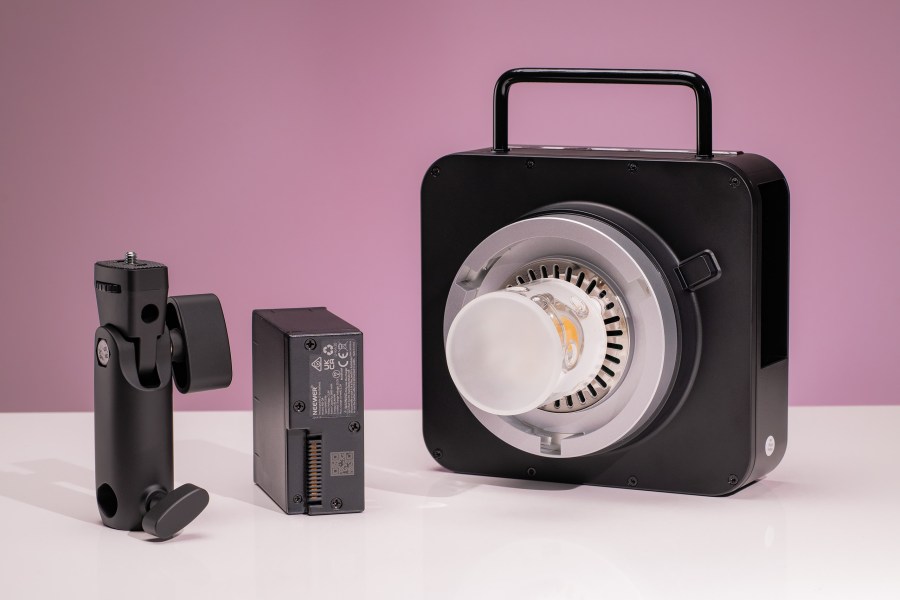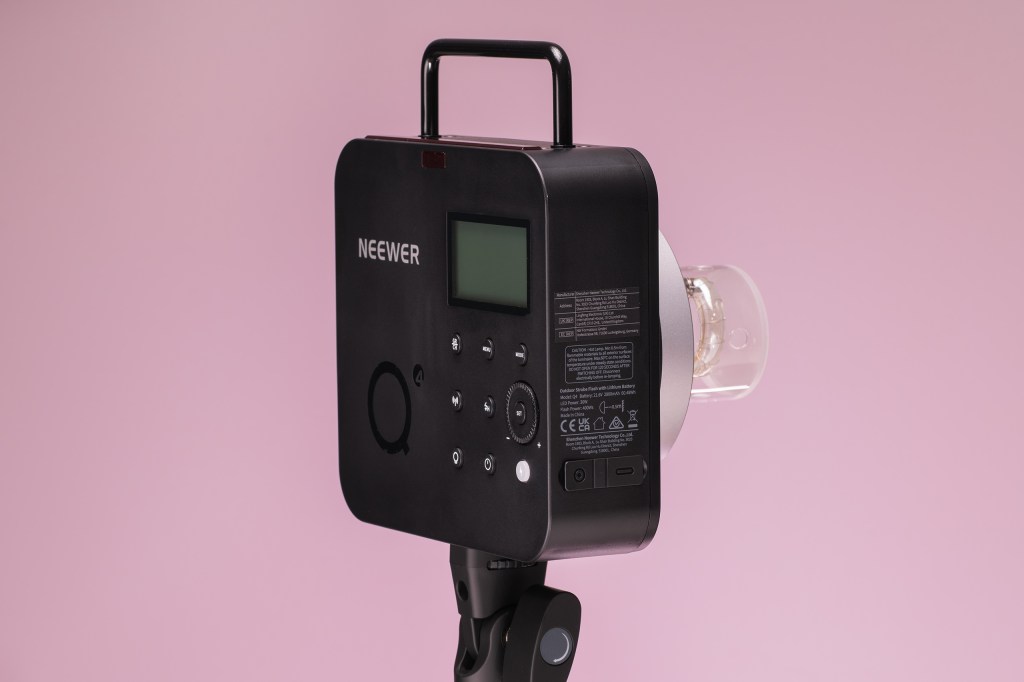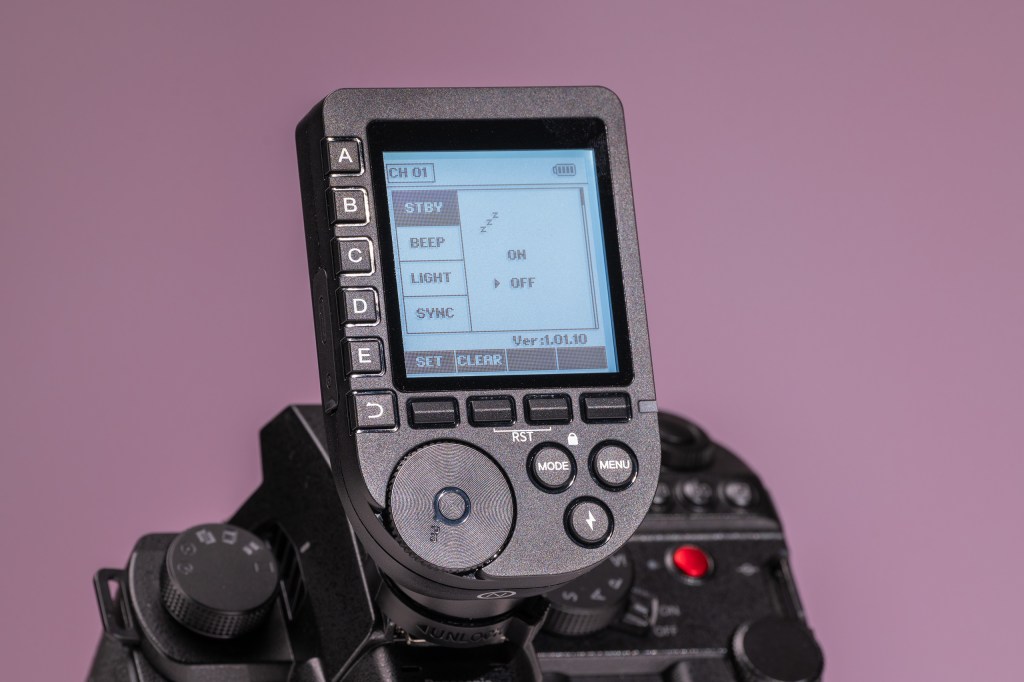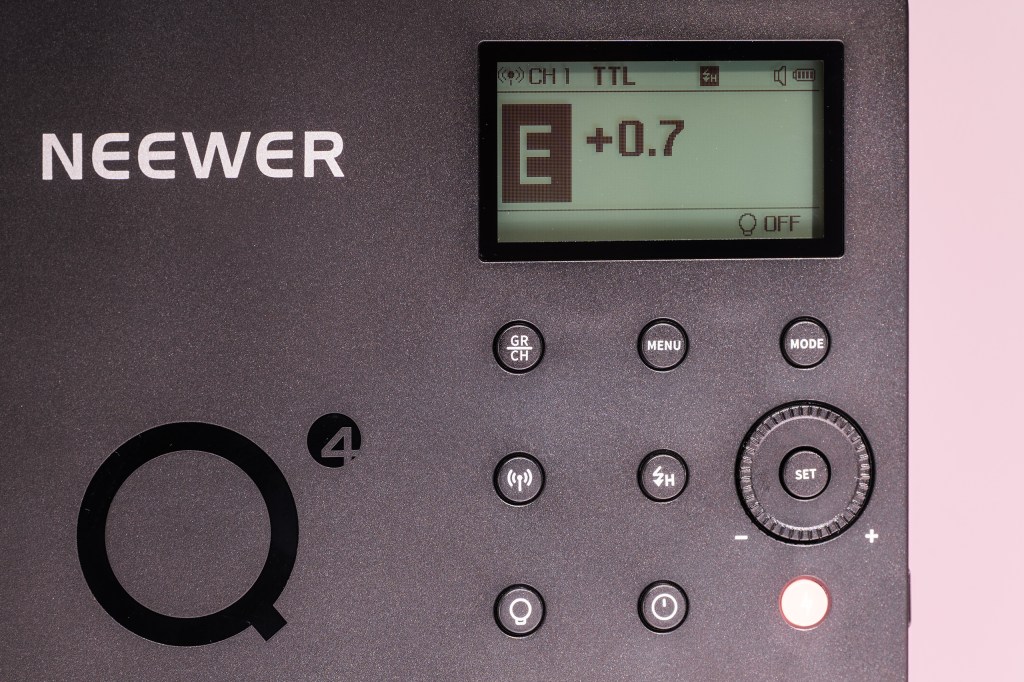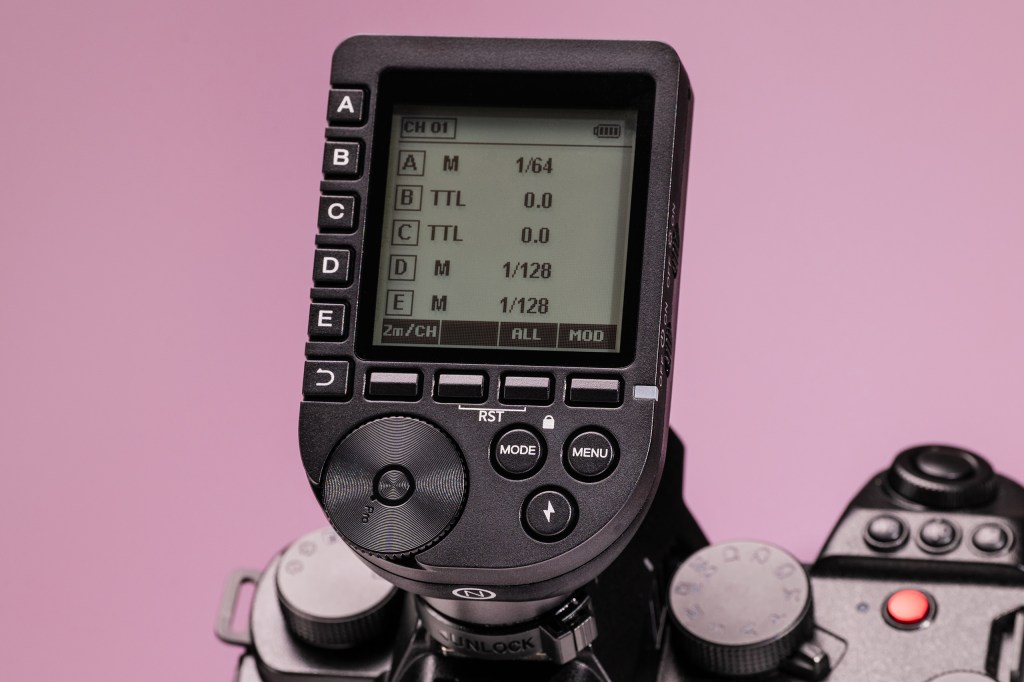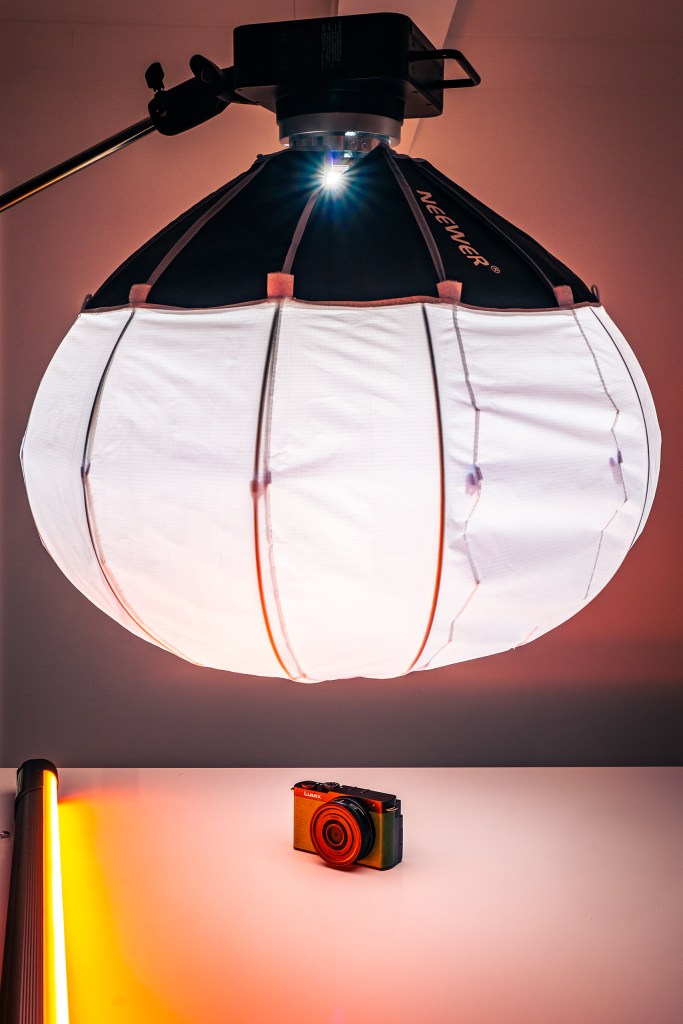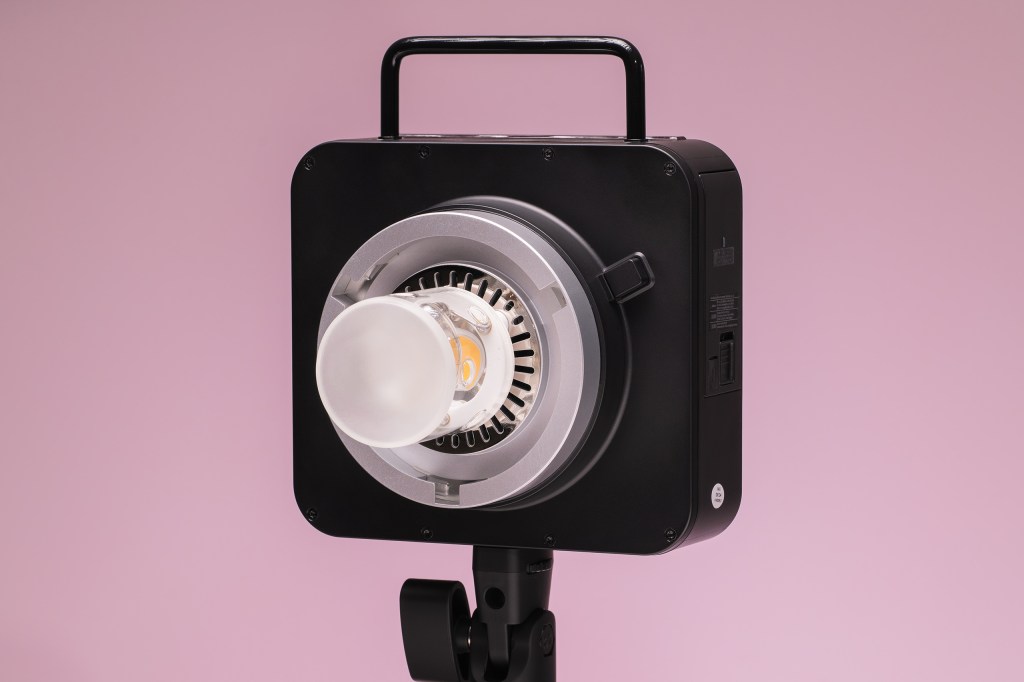Amateur Photographer verdict
Represents a great value for money with its considerable light output and solid modelling light. It is a little heavy, but still portable, and you can last a whole shoot with one battery- Very powerful flash
- High capacity battery
- Practical design
- Extremely reasonable price
- A little bit heavy perhaps
- Rear screen could be improved
It’s been quite a while since I reviewed a new flash unit. I had thought that perhaps flashes had done all they needed to do and that there wasn’t much new to invent that would make them any better than they had got. We stopped igniting flash powder in 1927 when General Electric invented the electronic flash unit, and in the intervening 98 years units have become smaller, battery operated, wirelessly controlled and a whole lot less likely to explode. Battery operation, portability, and power are the things I value most in a flash unit, as well as the ability to attach modifiers so we can create the sense of studio environment even when using guns designed for the hotshoe – and a dozen hotshoe units have been keeping me very happy for everything from headshots to lighting up warehouses for some time.
Neewer Q4 – At a glance:
- £390 or £470 with the QPro controller
- Battery/mains powered flash
- 30W modelling bulb
- 72m @ ISO 100 Guide Number
- Bowens accessory mount
- Backlit rear display
This Neewer Q4 head caught my attention because it comes with a slot-in battery that has more than 10x the capacity of my regular hotshoe batteries, massive light output potential and a native Bowen’s mount that needs no adapters to accept a huge array of modifiers. It also looks quite different to anything I’ve used before.
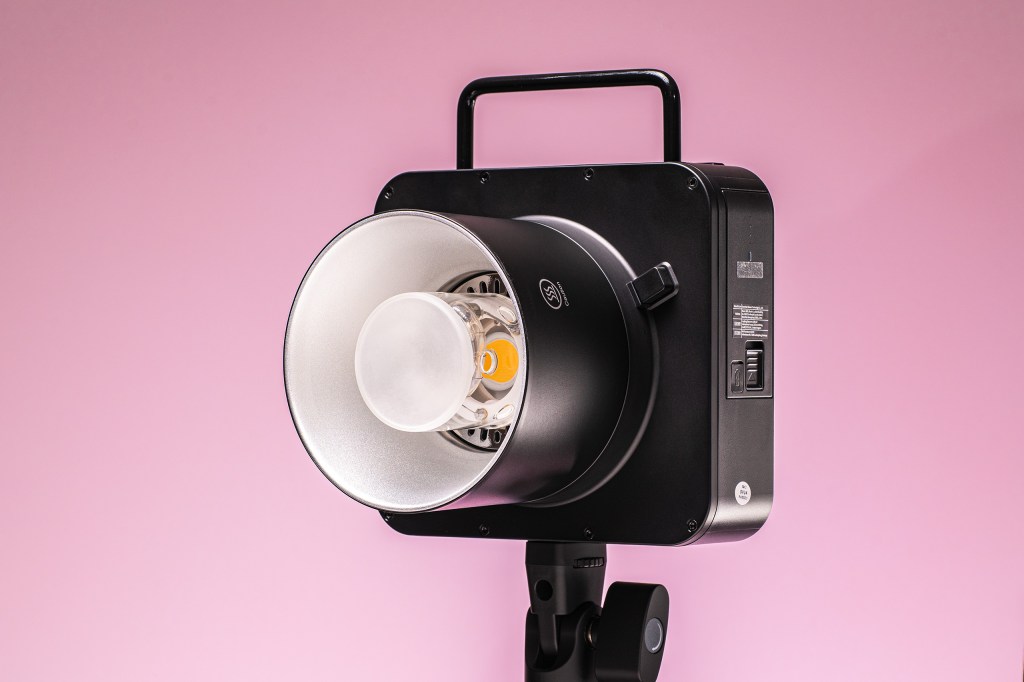
Neewer Q4 – Features
The Neewer Q4 is a 400Ws flash unit that offers users a guide number of 72 at 1m and ISO 100 when the optional High Performance reflector is fitted. In manual mode that output can be varied from full power to 1/256th power in 1/10th stop steps, and the head can be triggered via a 3.5mm jack sync cable, via a body mounted button, or wirelessly via the Neewer Q trigger system or via the optical sensor that picks up other flashes. A 30W 5600K LED modelling light is mounted behind the flash tube so we can get an idea of what the effect of the flash will be, and the flash tube (£116) itself can be changed by the user should it get damaged or come to the end of its life.
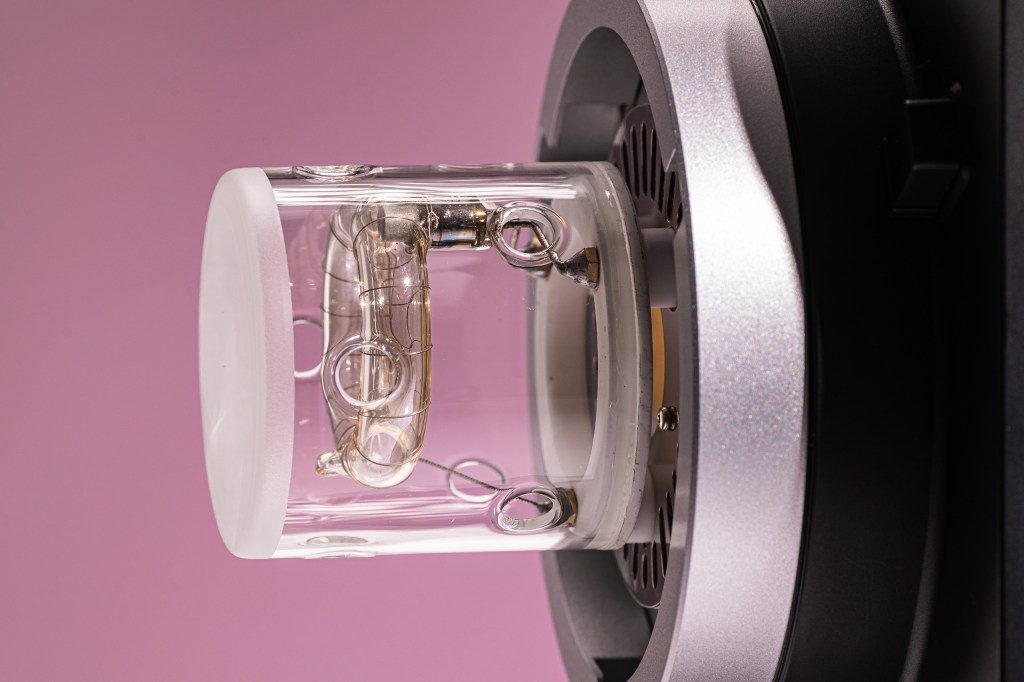
The unit can be powered by plugging it into the mains when you are inside, or via its removable battery when you are a long way from the wall. Neewer claims the 28,000mAh battery delivers 400 full power flash bursts, though whether or not you are running the modelling lamp at the same time will have some impact on that figure. The battery can be charged while inside the compartment of the Q4 or separately, so spare batteries (£140) can be charged and ready for action.
Flash modes on offer include manual, Multi burst and TTL for those using the optional QPro controller for Canon, Nikon or Sony TTL systems. In Multi mode we can trigger a burst of up to 100 flashes in sequence if we’re happy to have them one second apart, or 40 flashes at a rate of 199 per second – and a series of options in between. We also have a high speed sync mode that Neewer says we can use with shutter speeds as short as 1/8000sec – so useful for working outdoors and in mixed lighting.
For wireless operators, using the Neewer Q4 with the QPro transmitter gives us a choice of controlling five groups of heads from A to E, and we have 32 channels to work with. The working range is claimed to be 100m between flash head and transmitter, and we have 100 wireless IDs for the two to communicate securely. The head is quite large, measuring 18.5×21.2×15.4cm, and it weighs a not unsubstantial 2.24kg – but that includes the battery.
Neewer Q4 – Key characteristics
- Multiple triggers: The flash can be triggered via the 2.4Ghz QPro wireless system, by cable, manually or optically from another flash
- Multiple modes: Modes offered include single burst, multi-burst modes of up to 199 flashes per second, TTL and high speed sync up to 1/8000sec
- Powerful battery: The battery makes the flash properly portable, and allows 400 full power bursts per charge – and you won’t need full power on most occasions
Neewer Q4 – Handling
The Neewer Q4 is designed like the radio your father used to keep in the shed in the 1970s, but the advantage of this is that the rear panel has lots of space for the controls we’ll need to make the head work. There’s enough space for a decent sized (2.75in) display panel that shows us our settings and allows us to navigate the menu system. It’s a low-resolution Lego-style dot matrix display with the kind of lag that means figures blend into each other as you make adjustments but it has a backlight for working in the dark and it certainly does the job well enough. Below the display we have a collection of nine buttons and a dial for accessing our modes, test triggering the flash, switching it on, operating the modelling bulb and dialling in the power we want to output. The buttons are all marked so their use is obvious and five minutes with the head in your lap and a cup of tea by your side will be enough to discover all you need for day-to-day use without troubling the handbook.
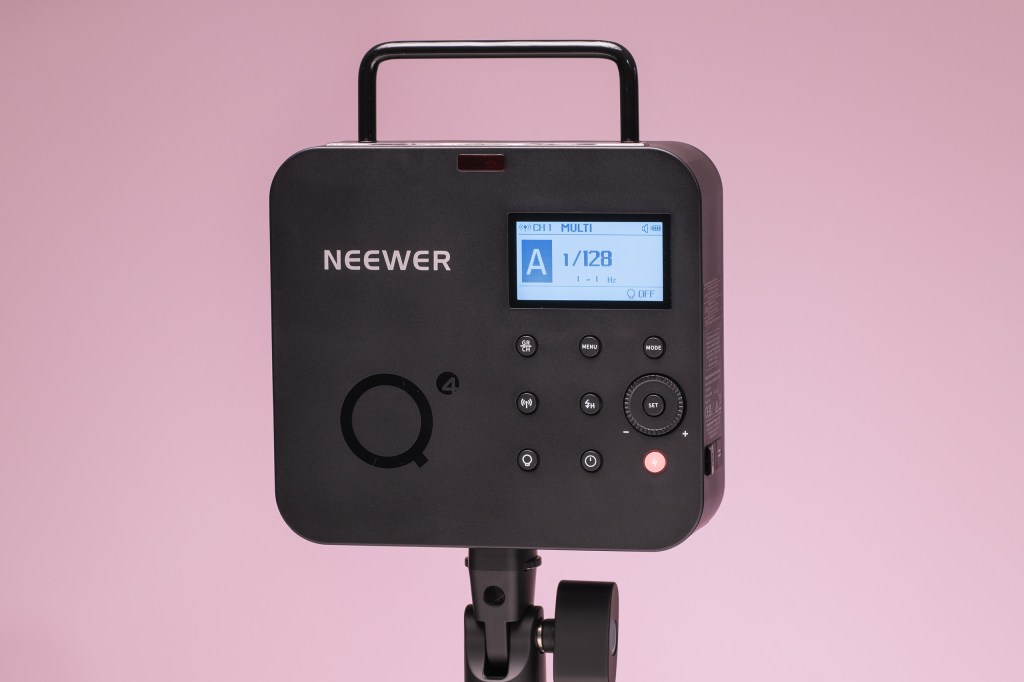
The base of the head has a standard 1/4in 20 thread that accepts a normal camera tripod screw, but the kit comes with a hinged bracket that screws into this so we can attach the head to a lighting stand. The bracket is very nicely made, comes with anti-rotation pins that marry with a pair of holes on the base of the light, and has a pass-through hole for the shaft of an umbrella. It’s strong too, and feels very secure.
I wasn’t sure about the top handle on the head at first, and worried that it makes the unit bigger than it needs to be, but by the end of the review I’d become rather thankful for it. Unsurprisingly it makes holding the flash a whole lot easier, so it’s more comfortable to take out of the case and to mount on/dismount from a light stand. It dramatically reduces the chances of accidents, but if you don’t like it four screws are all that stand in the way of its removal.
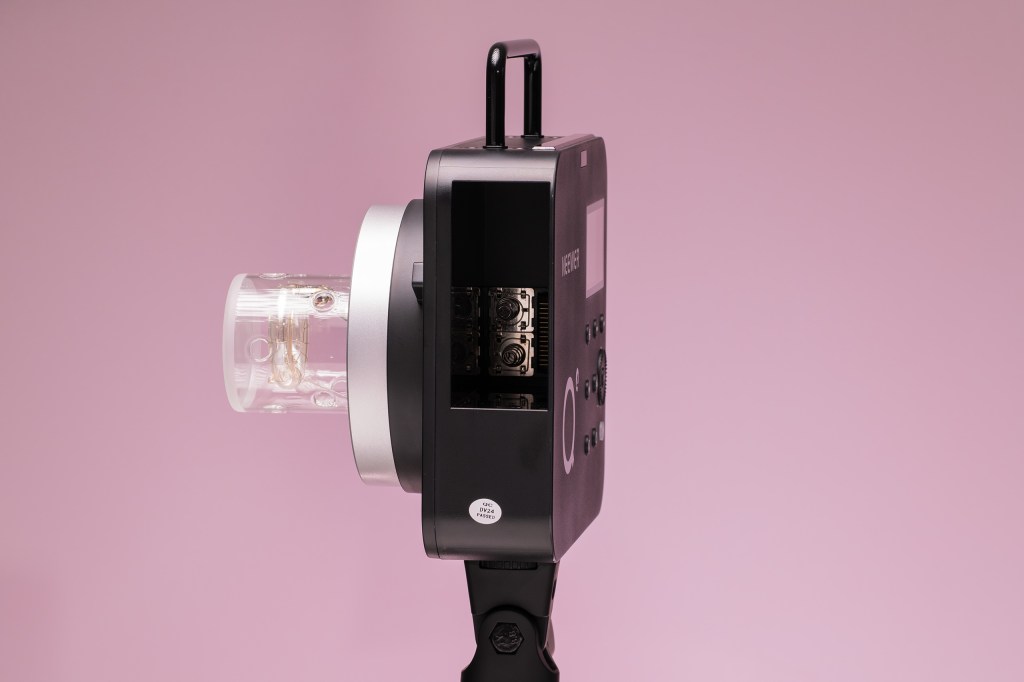
Neewer Q4 – Performance
This is a powerful beast, and it makes an impressive popping sound when fired at full power that alone fully justifies the price. The 72m guide number takes this head well out of the regular hotshoe/speedlite category and delivers enough light to over-power the sun even on a bright day. I found it pops with a consistent power too, and that any colour changes between full and low power setting aren’t perceptible in regular situations. On full power, the head charges itself very quickly, so the delay between shots needs only to be fractionally over one second when the battery is fully charged, and by the time we get to 1/8th power the head is ready to fire again as soon as you’re ready to open the shutter. I found 1/8th power with the supplied soft reflector gave me f/5.6 7/10th from a distance of 2m, while full power gave me f/16 3/10th at ISO 100. A shiny silver dish with optimising facets pushes the full power reading to a brutal f/22.
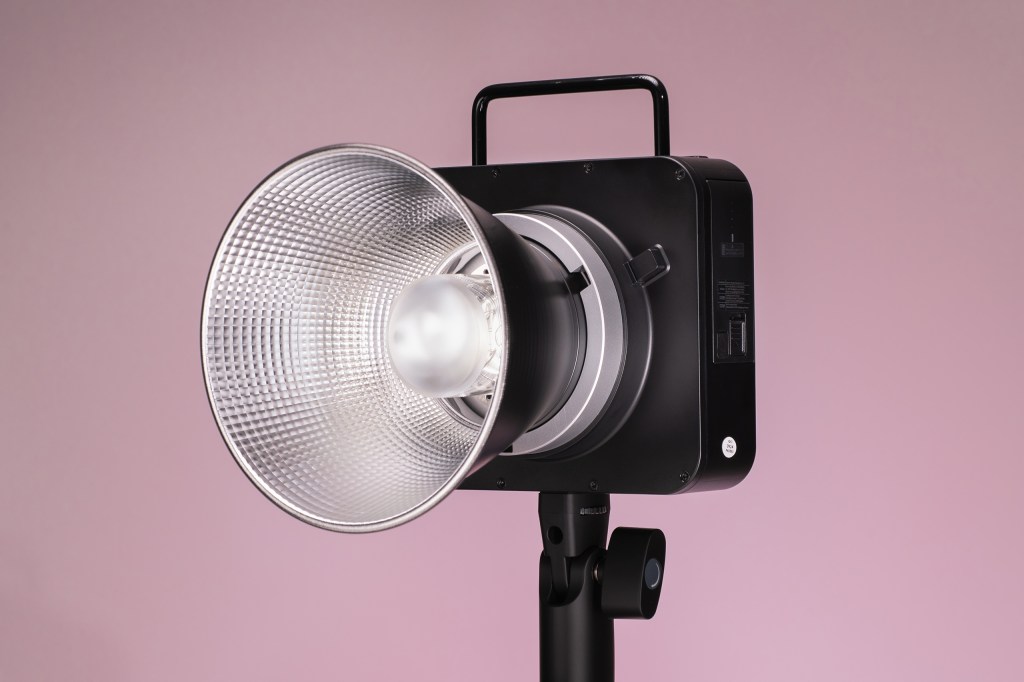
A fan keep things cool inside and helps to prevent over-heating in heavy sessions, and allows us to have the modelling light on inside small modifiers without it needing to take a break.
I found the wireless connection between the head and the QPro trigger to be secure and reliable, and that they work fine at normal close distances as well as when a very long way apart. I was also very glad to find an optical slave trigger built in so we don’t have to rely entirely on the QPro wireless system. This allowed me to integrate the Q4 with my existing heads without the need of a QPro controller – though the QPro allows us to adjust output without having to physically go to the head.
The cover for the flash tube doubles as a kind of spill-kill dish and with its satin-silver finish produces a slightly softer light once the front cap is removed.
Neewer Q4 – Optional extras
The QPro wireless trigger is listed as an optional extra, but in practice you are going to need to buy one to control the Q4 head. They come in configurations for Canon, Nikon and Sony, but you can use the Canon and Nikon ones on any other camera so long as you don’t need TTL shooting. I used the Nikon version on my Panasonic Lumix cameras with no problem at all – just in Manual flash mode. The controller is very good and very easy to use, with a big enough screen and enough buttons that changes can be made quickly and simply without us having to remember the combination of button presses some other controllers demand. It costs £75 and can be paired with optional QR receivers for secondary third-party flashes that cost £46.99.
Not specific to this flash head, I got the Q4 with the Neewer NS65L lantern softbox which has been excellent. It assembles in about three seconds, comes with a skirt to direct light where you want it and it puts out a really beautiful, flattering illumination. It’s very nicely made and is an extremely clever design.
Neewer Q4 – Our Verdict
The Neewer Q4 is one of those products I wasn’t sure what I’d make of when it arrived. The shape is different to other flashes and it really wasn’t clear why. In use though I’ve come to like it a great deal, and it unexpectedly found its way in to my regular flash kit. It is big and it is heavy, but it is also very powerful and it has a battery that can run a whole shoot without the need for recharging. It’s very easy to use, it has all the features you’d expect from a modern flash and it can work in optical mode with flash heads from the first days of General Electric’s first electronic models. Actually, it will sync with magnesium ribbon too if you need it to.
I love that it has a good modelling light, that it’s nice to handle, that the fittings that come with it are solid and that the QPro controller is reliable and simple to use. And, at £390 for the head and £470 for the kit with the QPro it is remarkably well-priced for the power and functionality. If I wanted a spare battery and spare bulb though I’d probably just buy another Q4 unit as the difference is only £130.
The Neewer Q4 is an excellent flash unit that will suit the advanced photographer as well as the flash beginner looking for growing room – its solid, powerful, simple to use and great value for money.
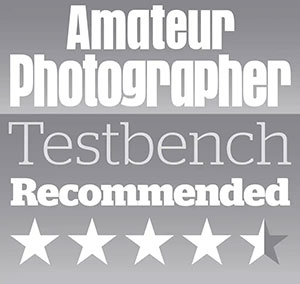
Related reading:
Follow AP on Facebook, X, Instagram, YouTube and TikTok.

